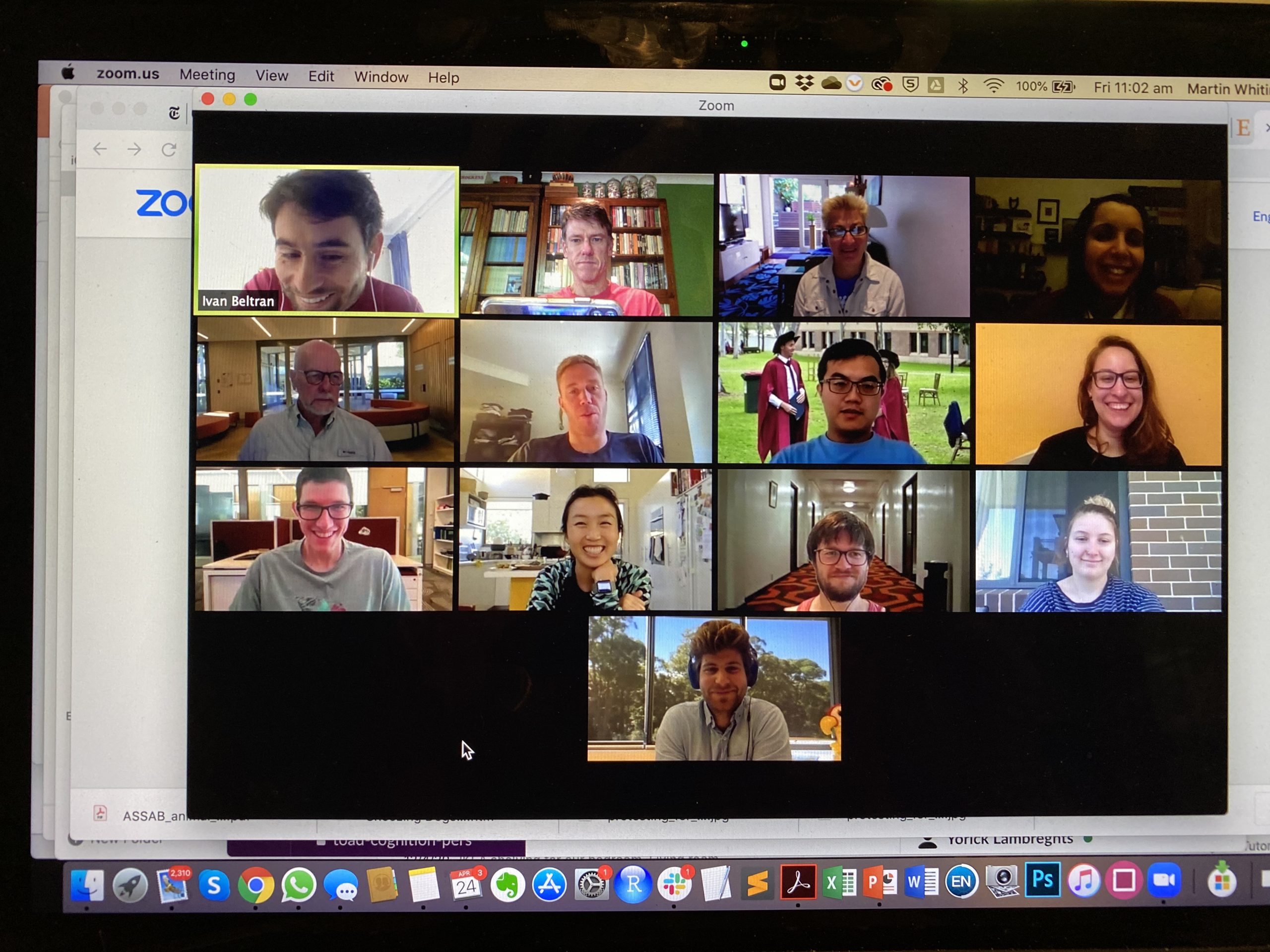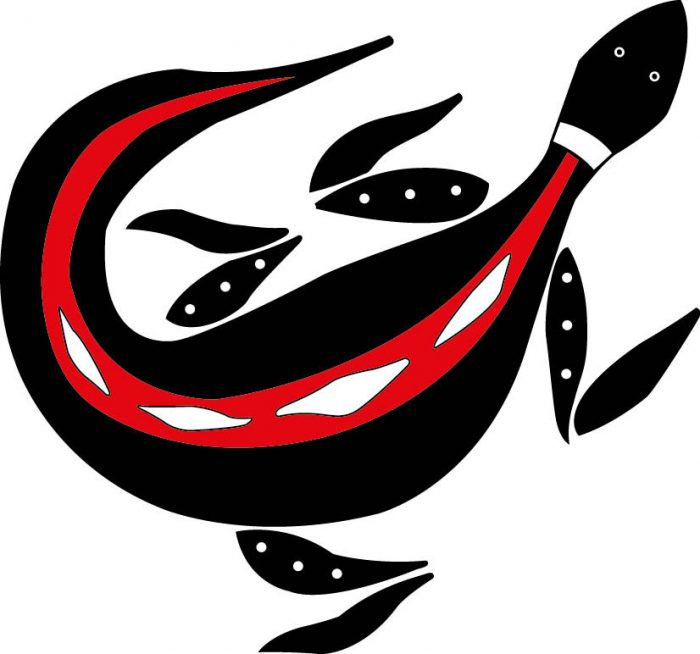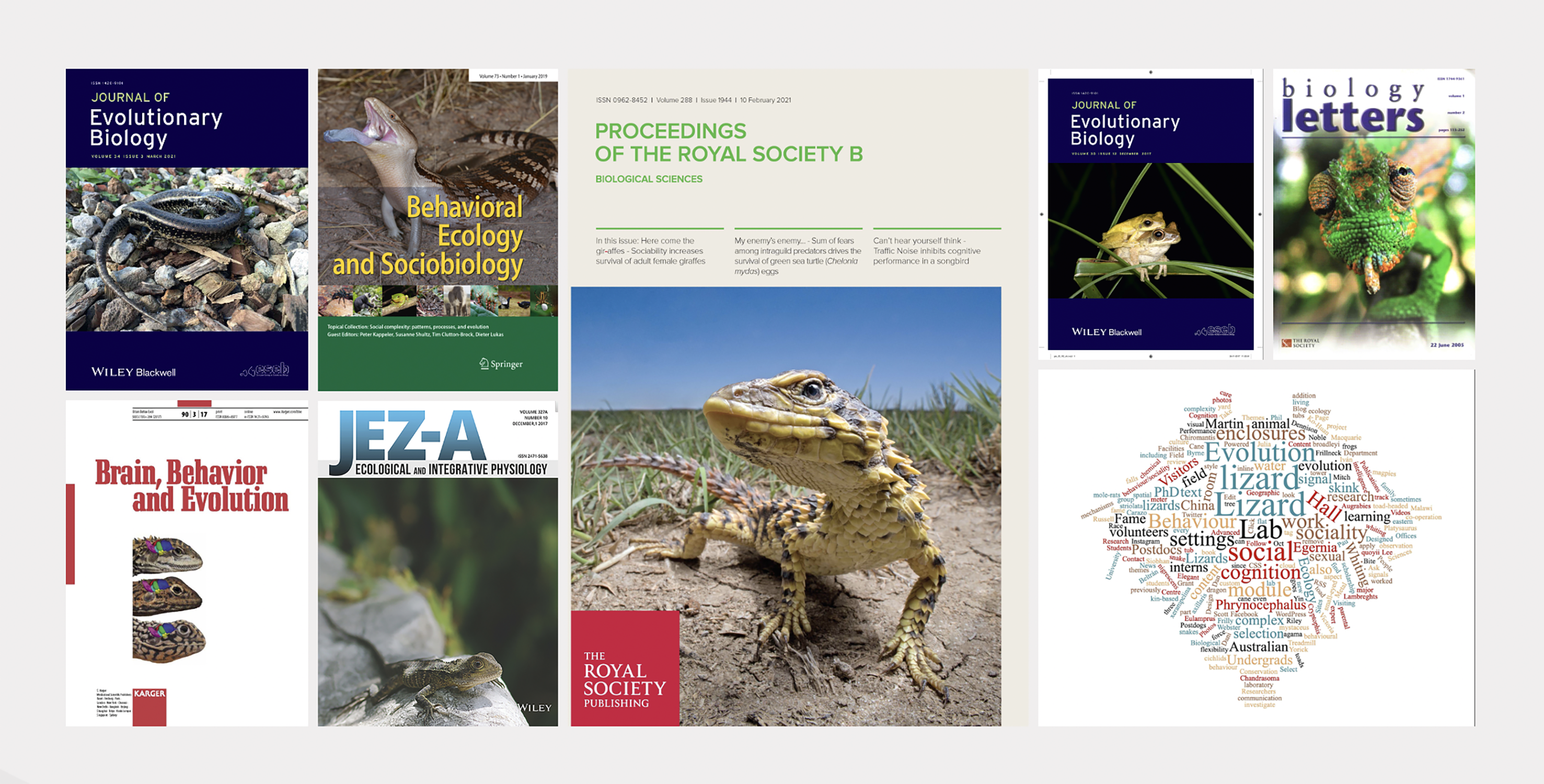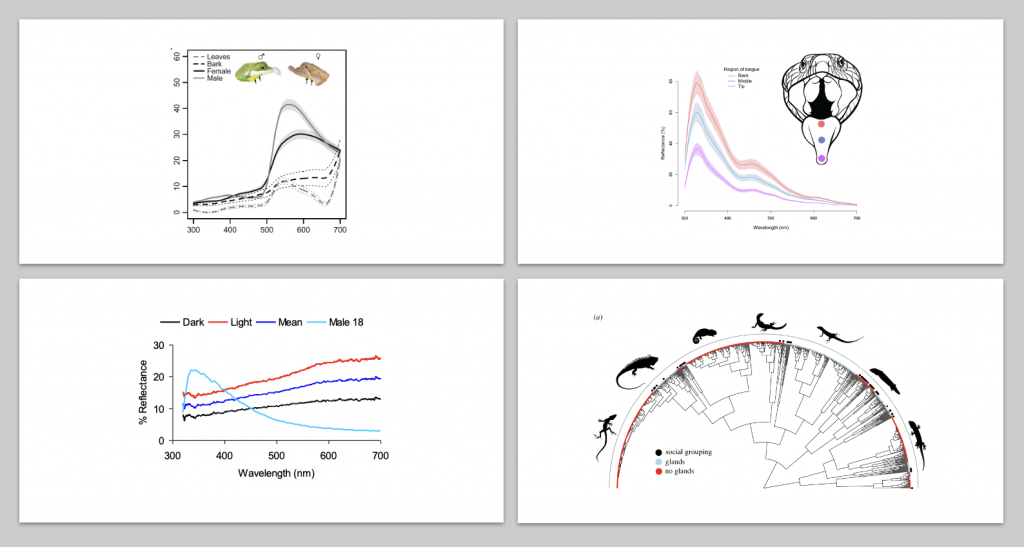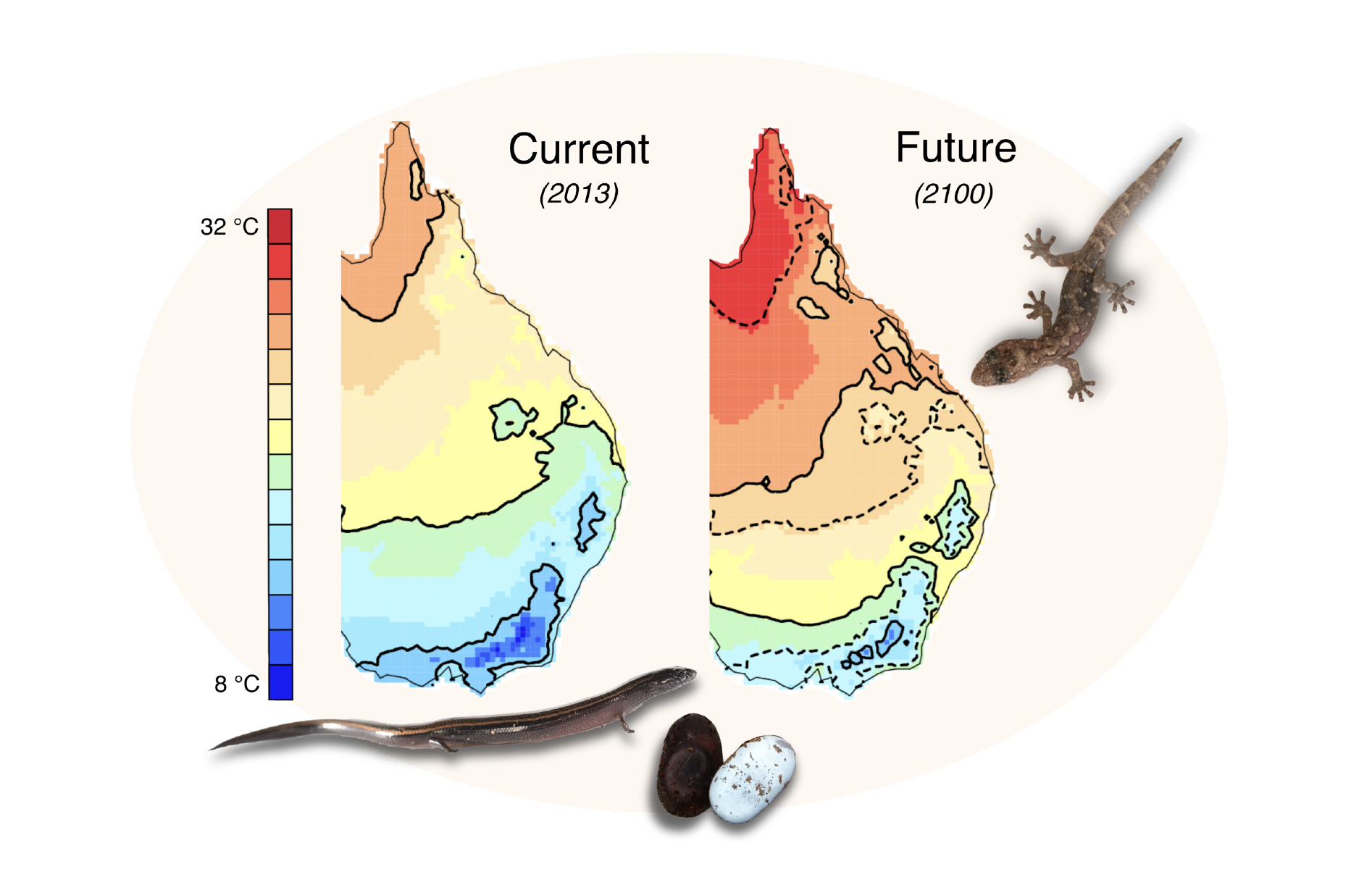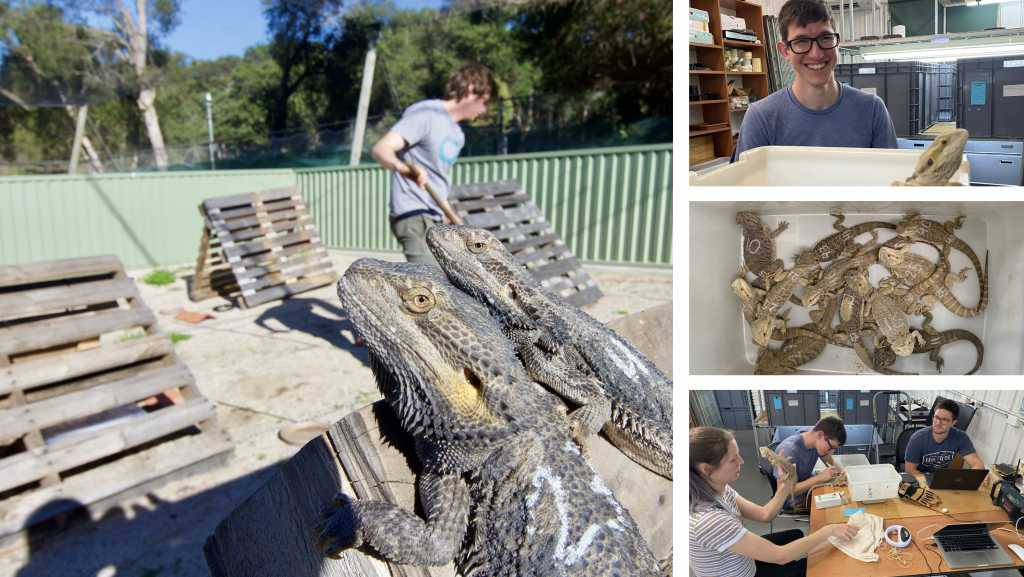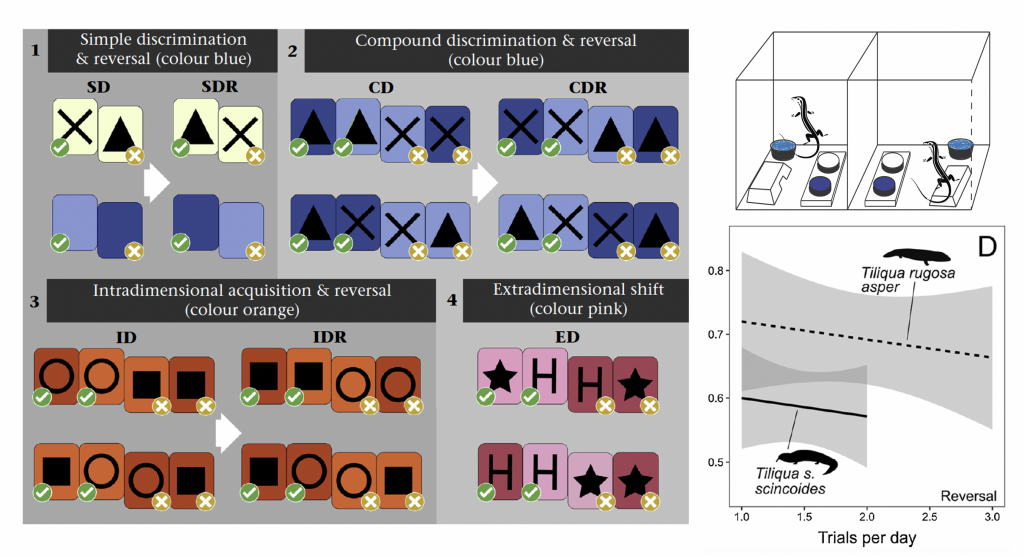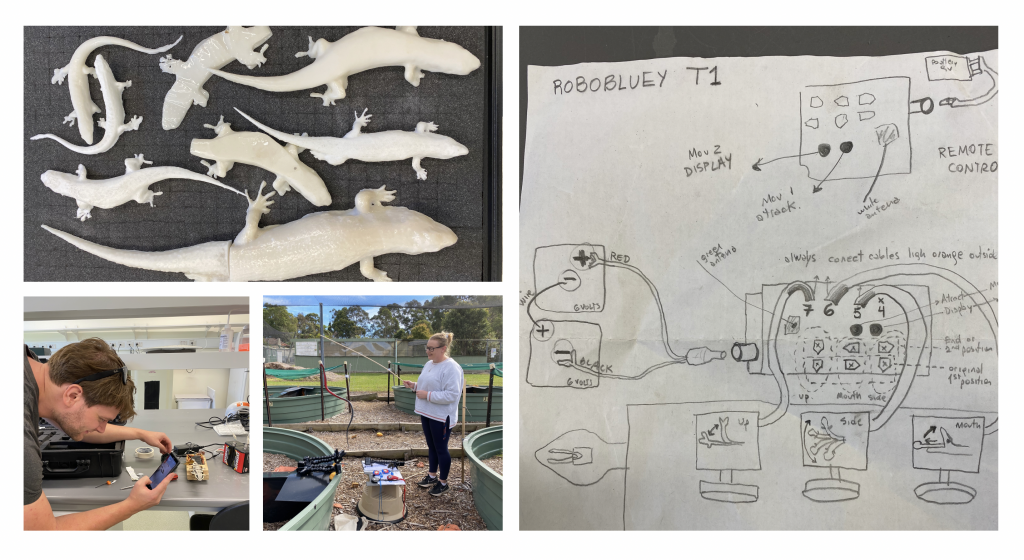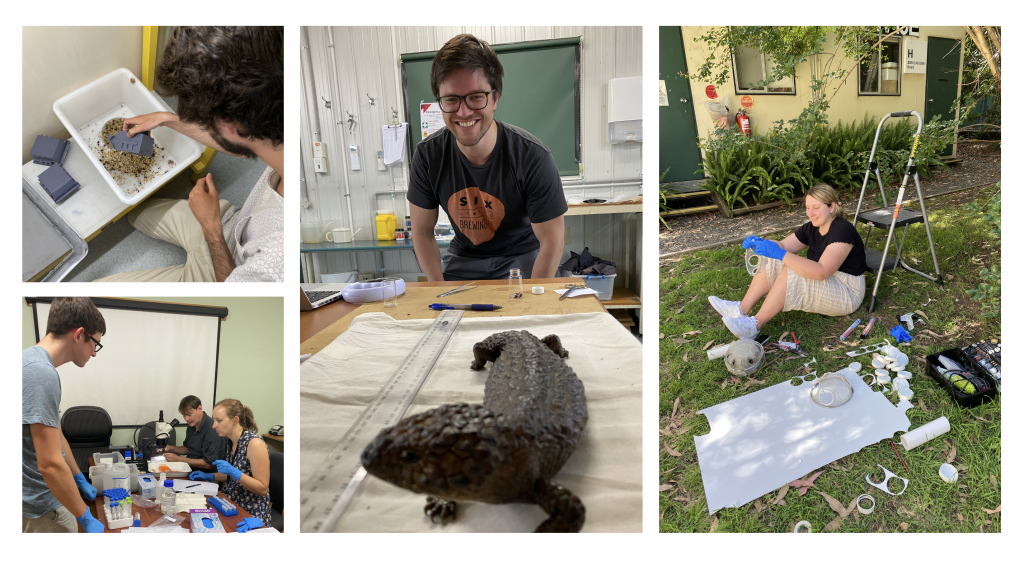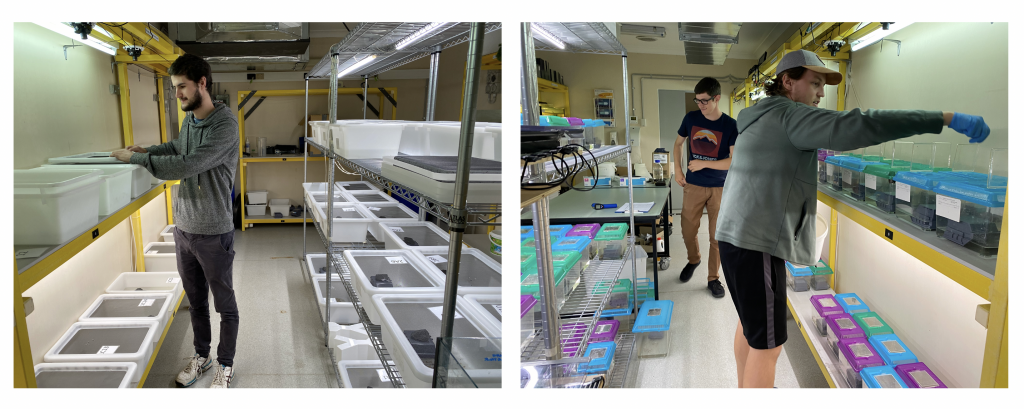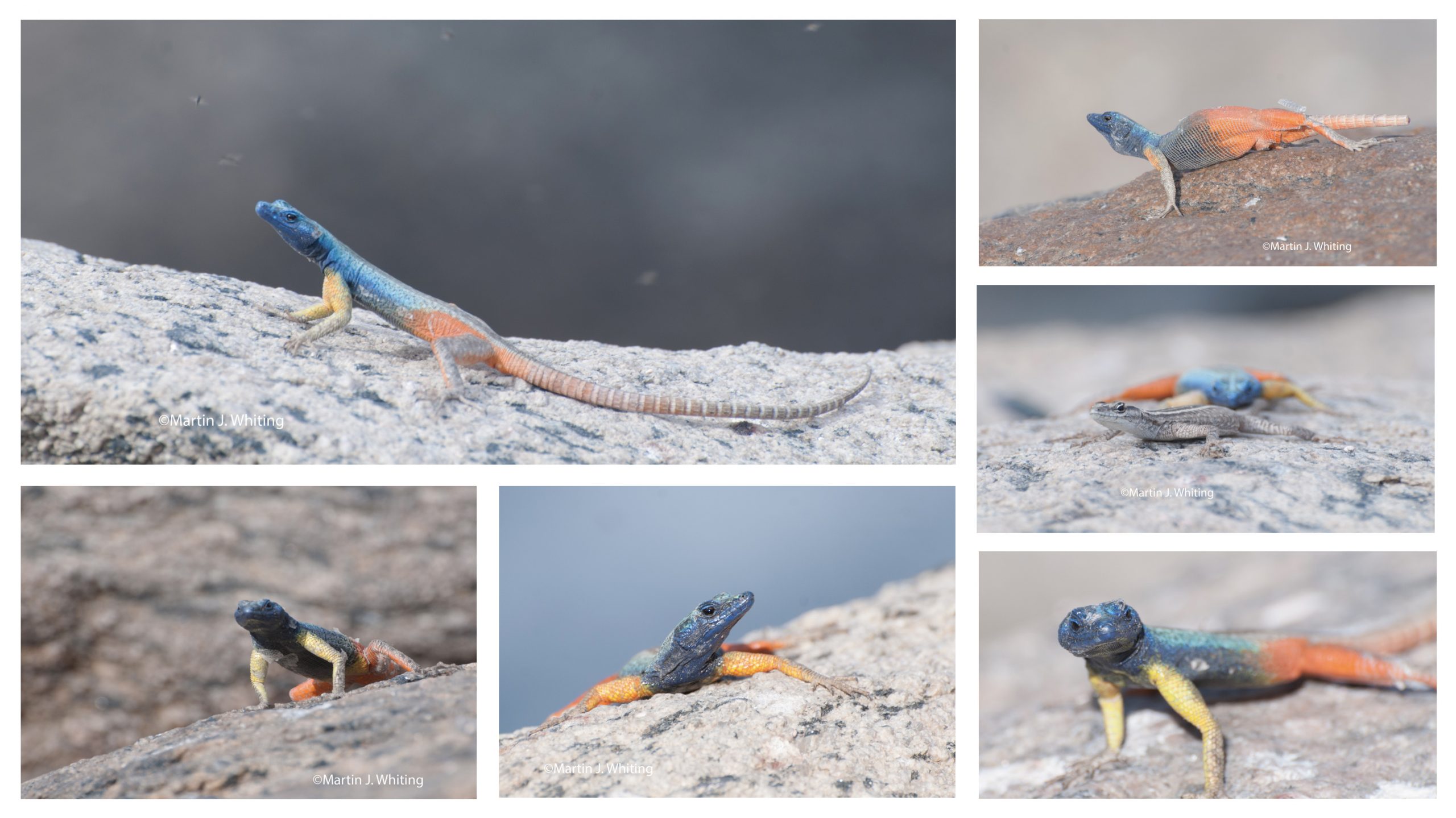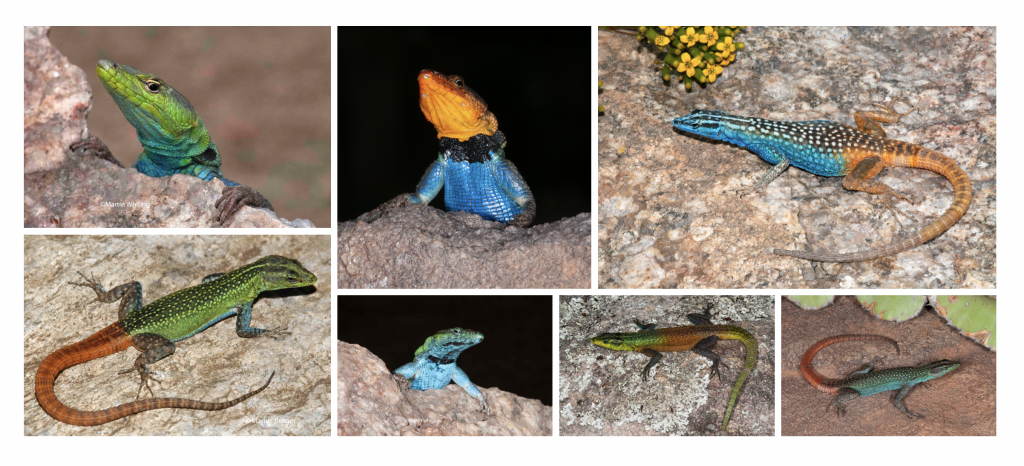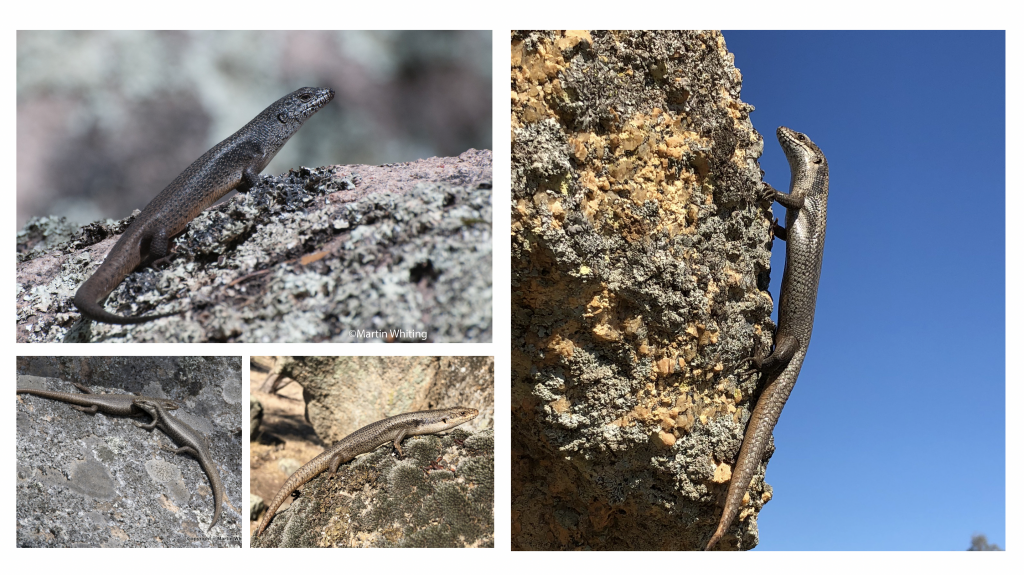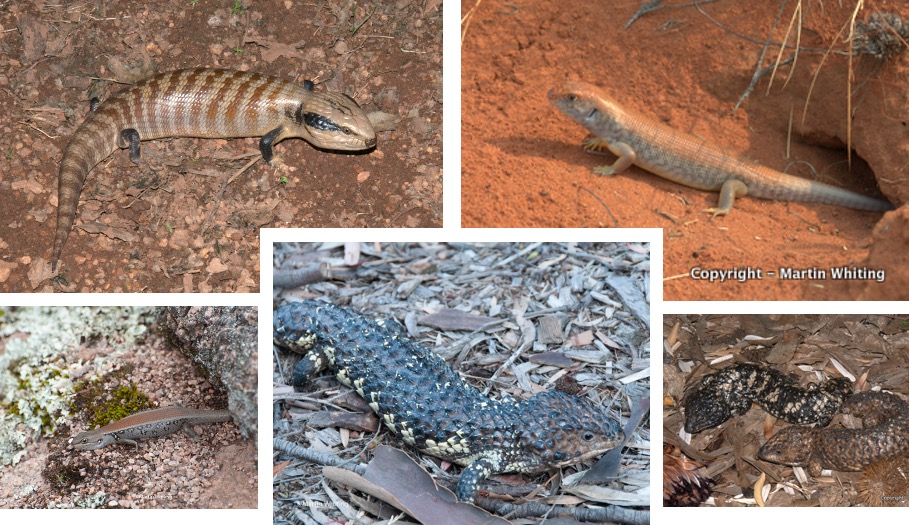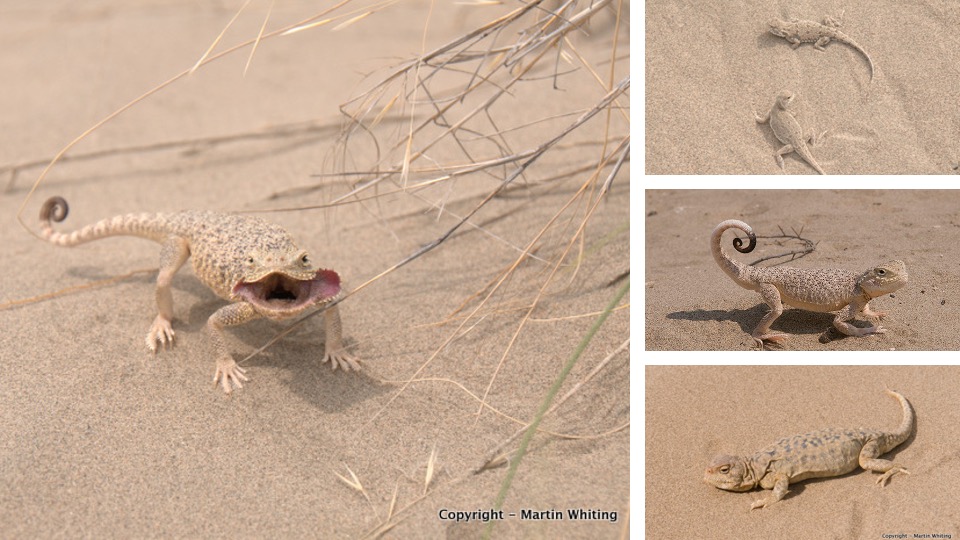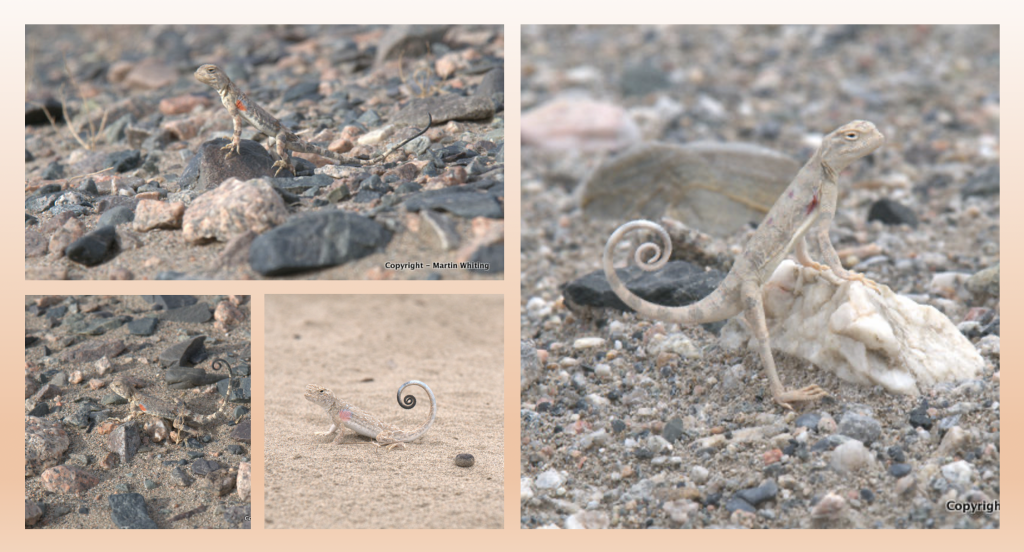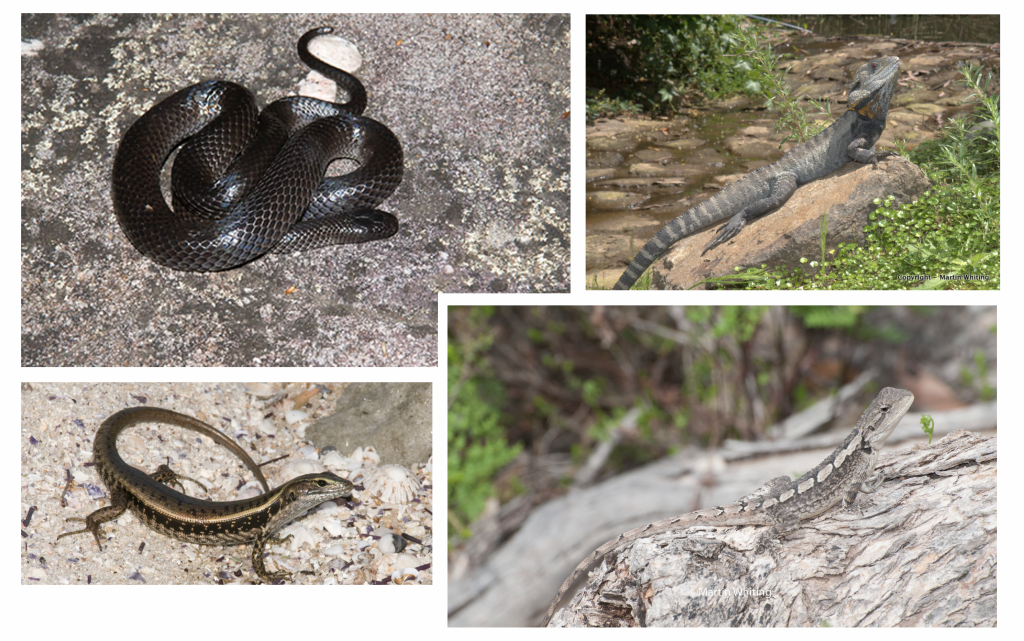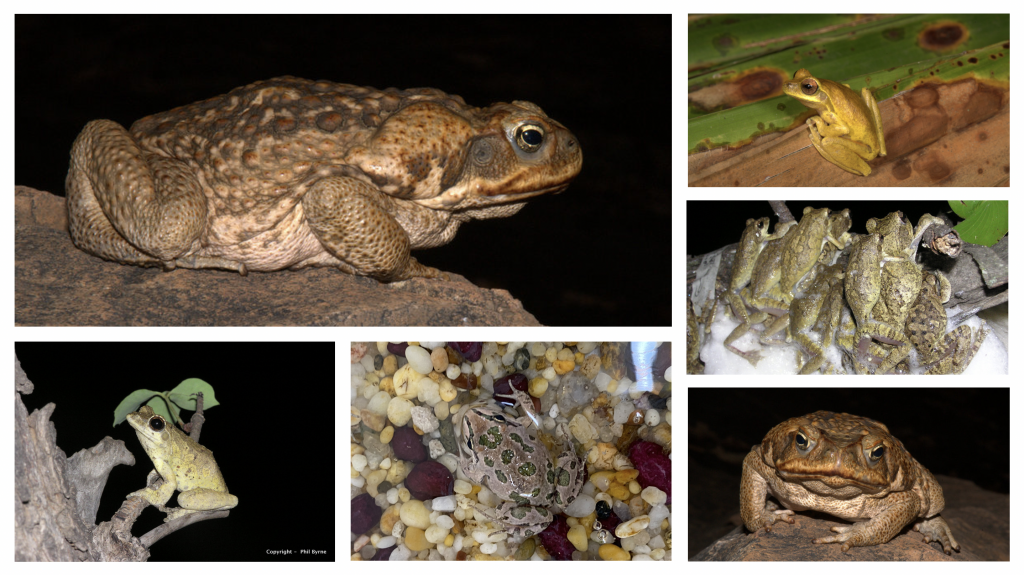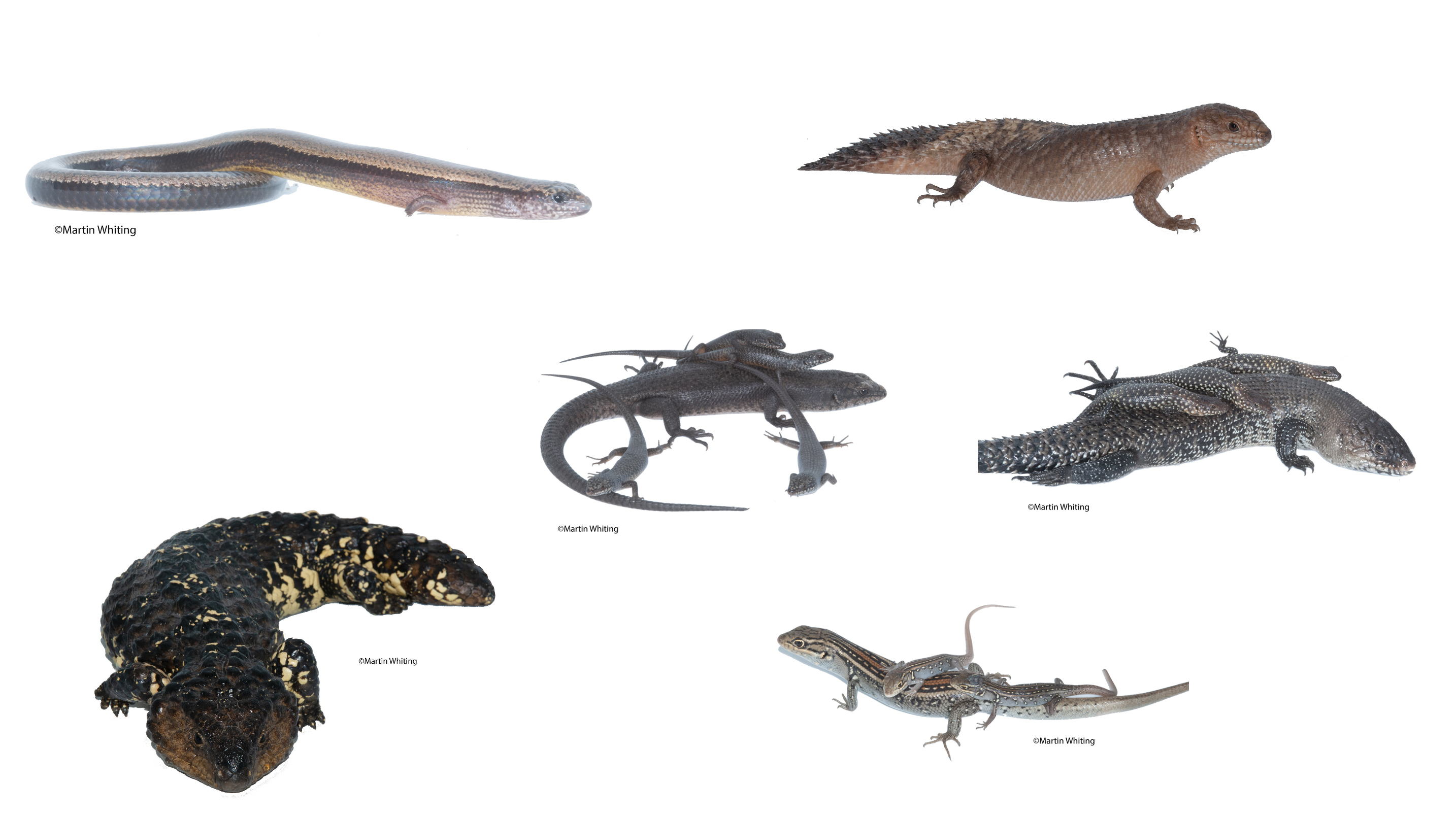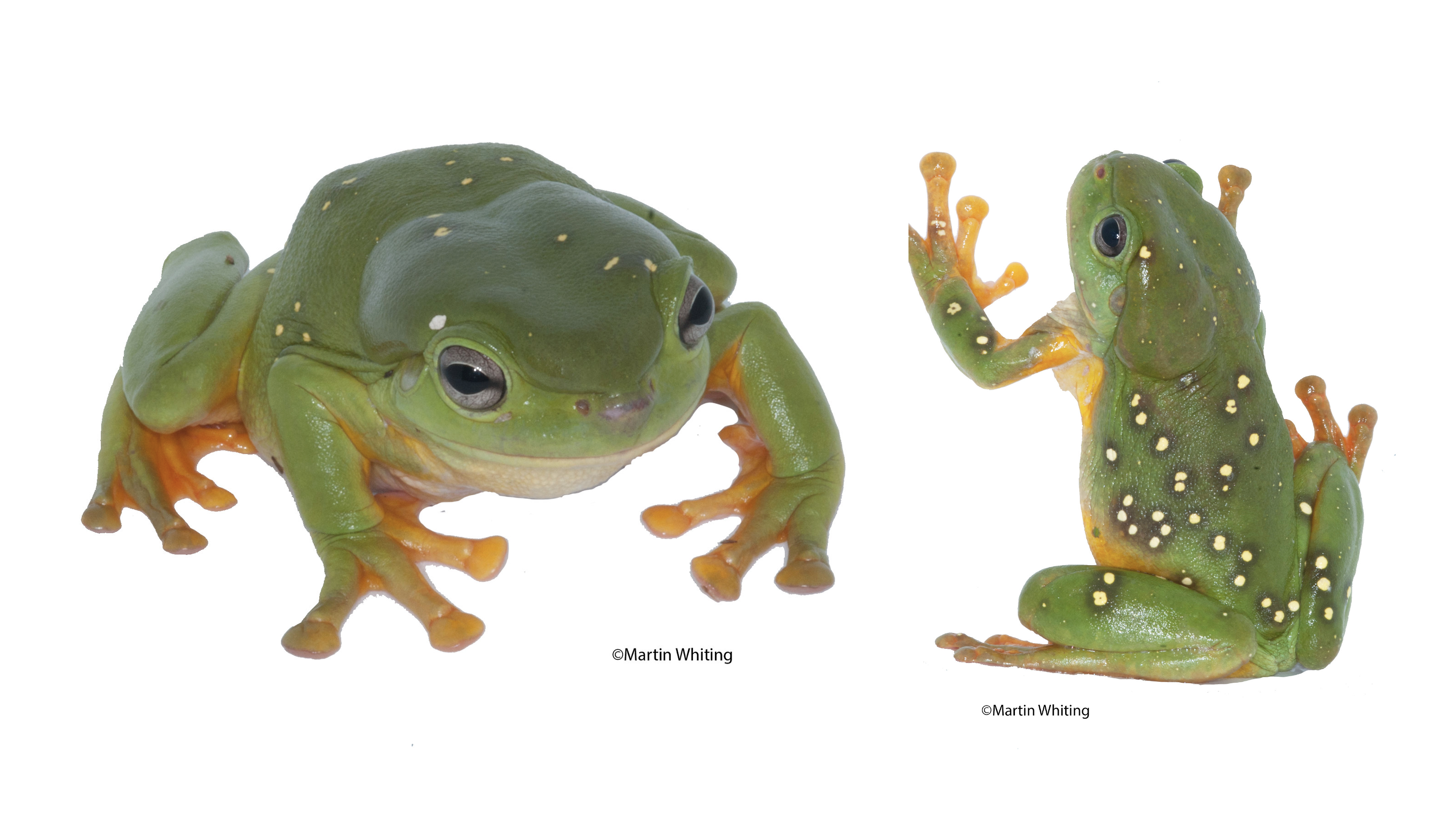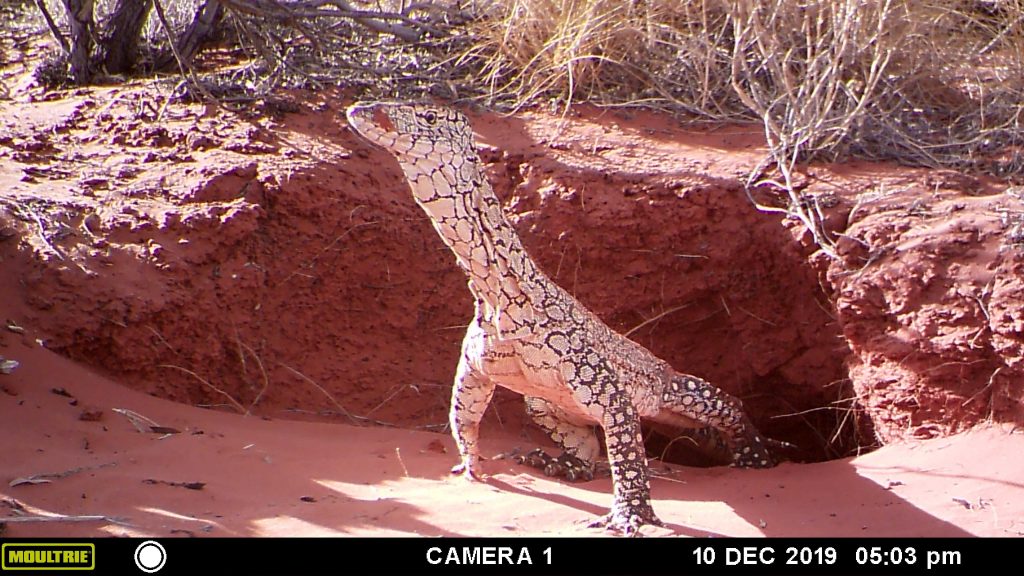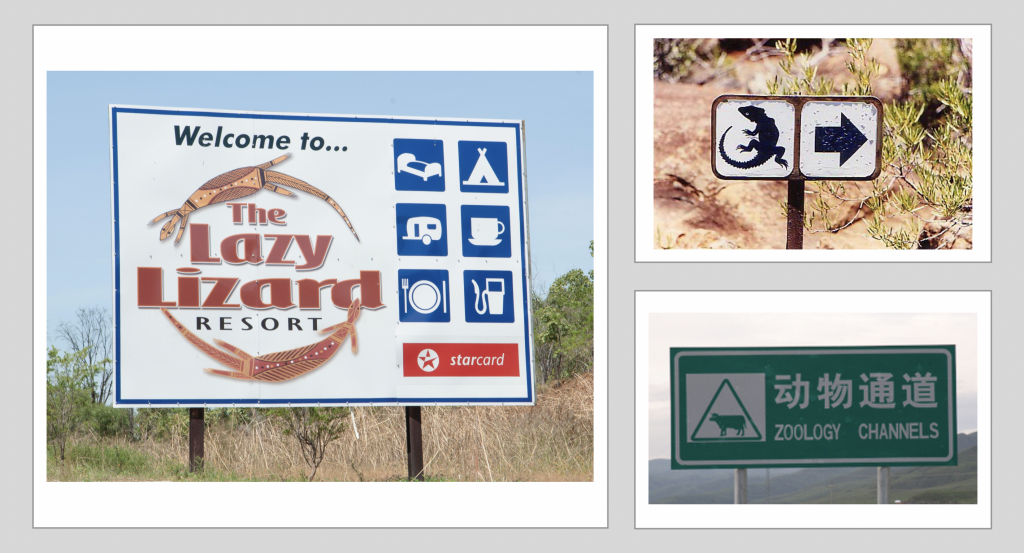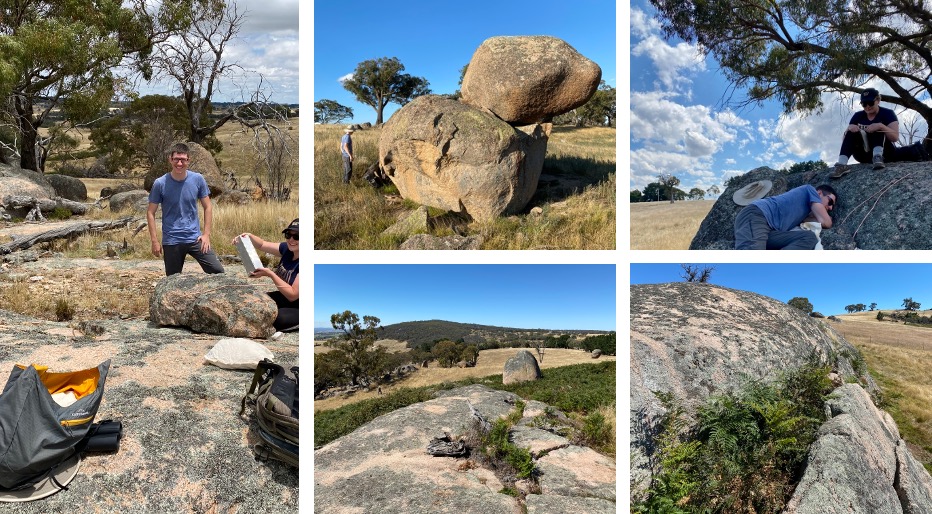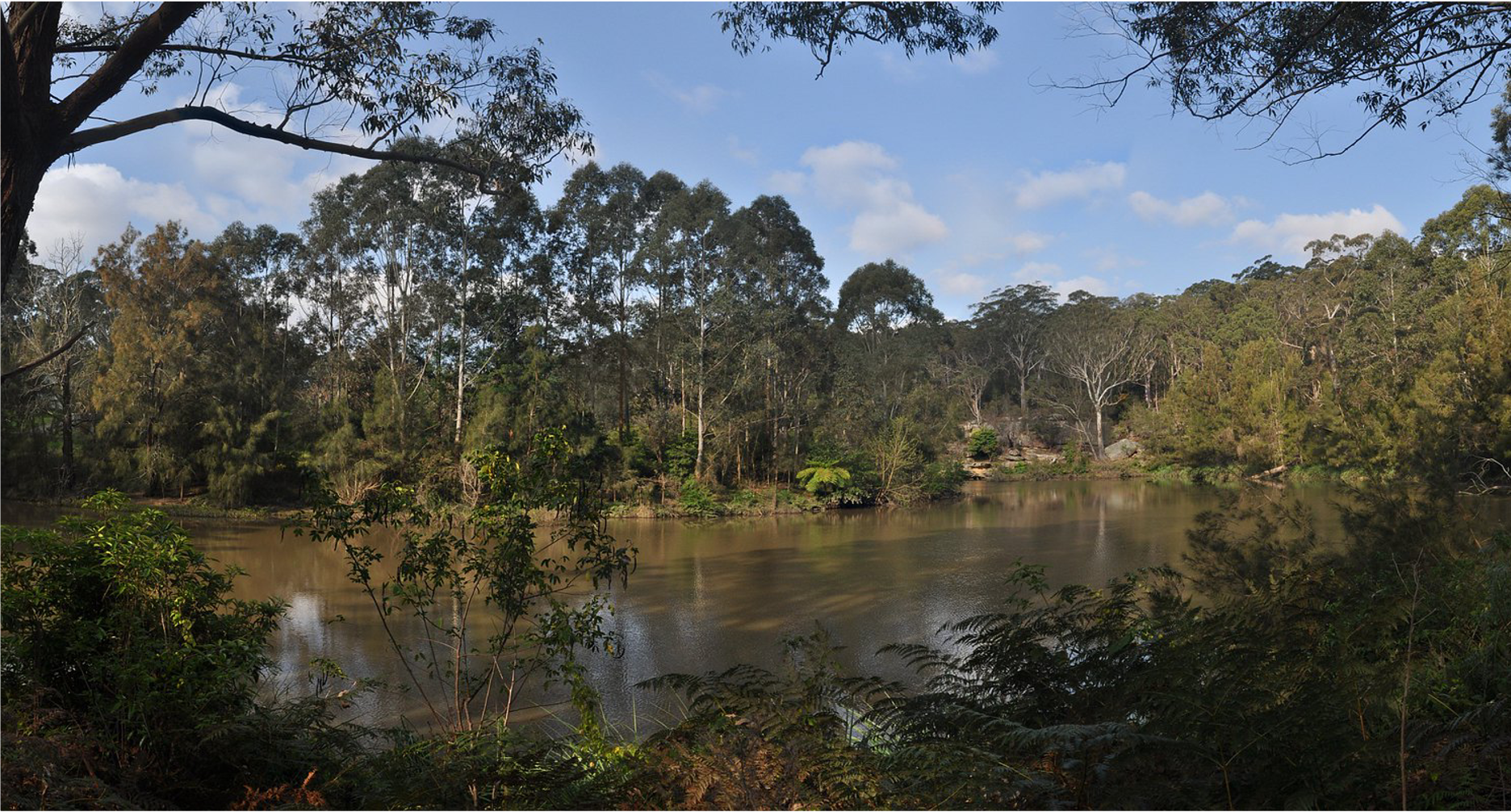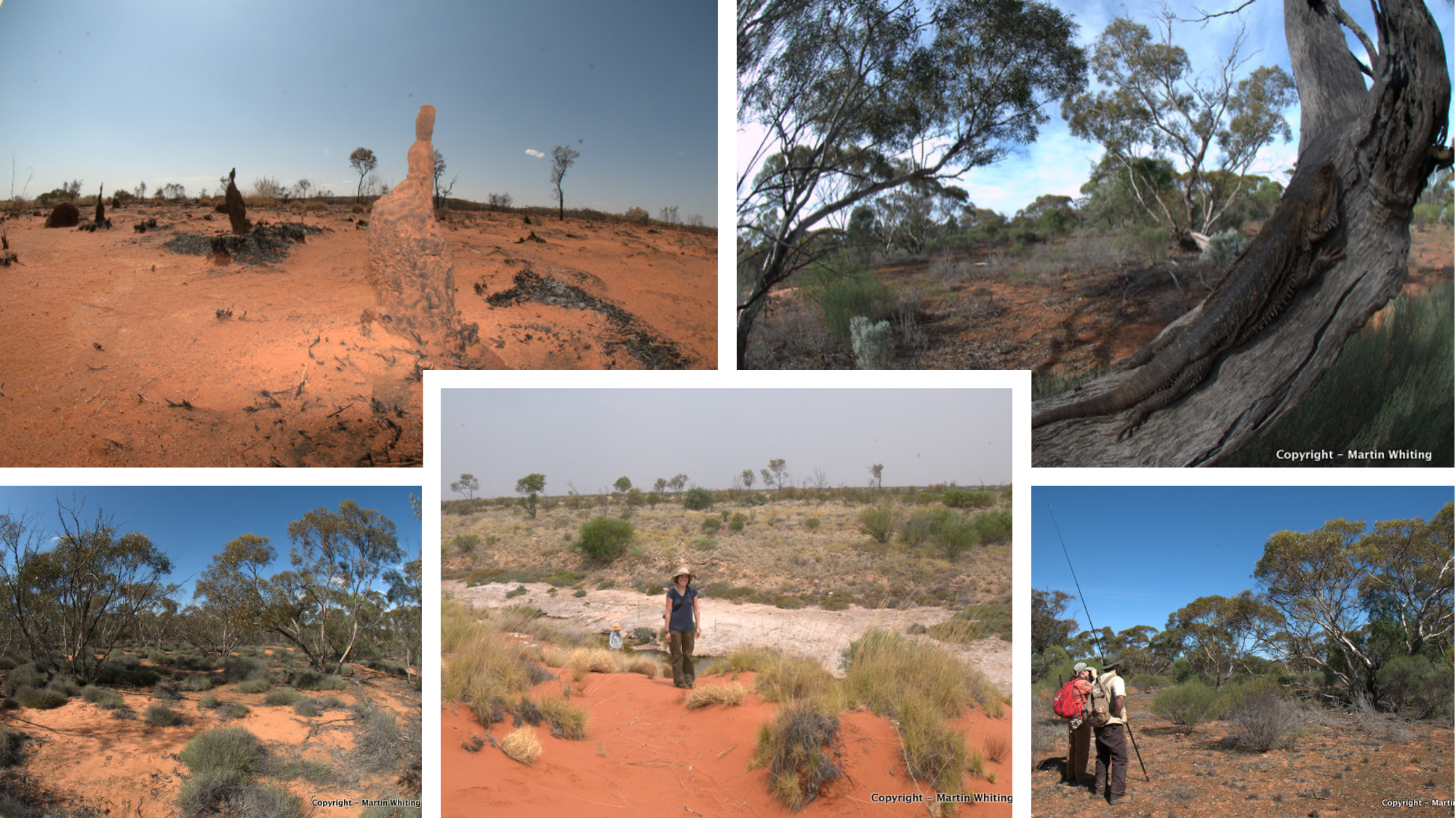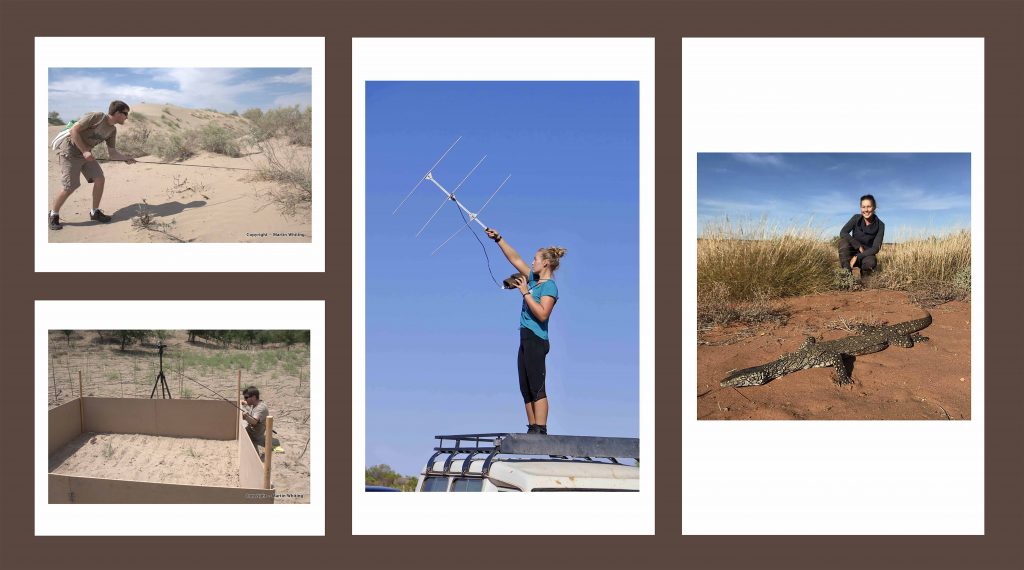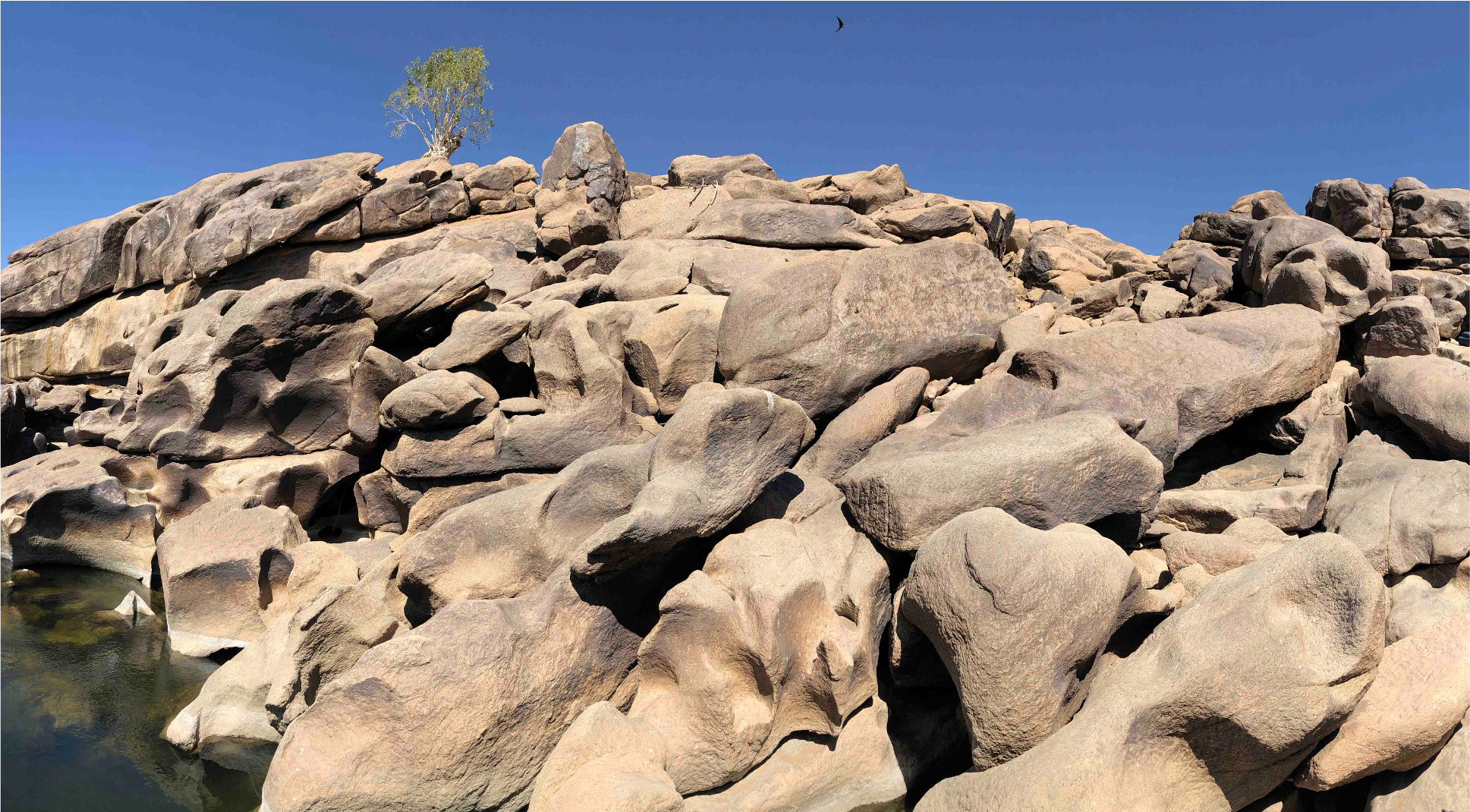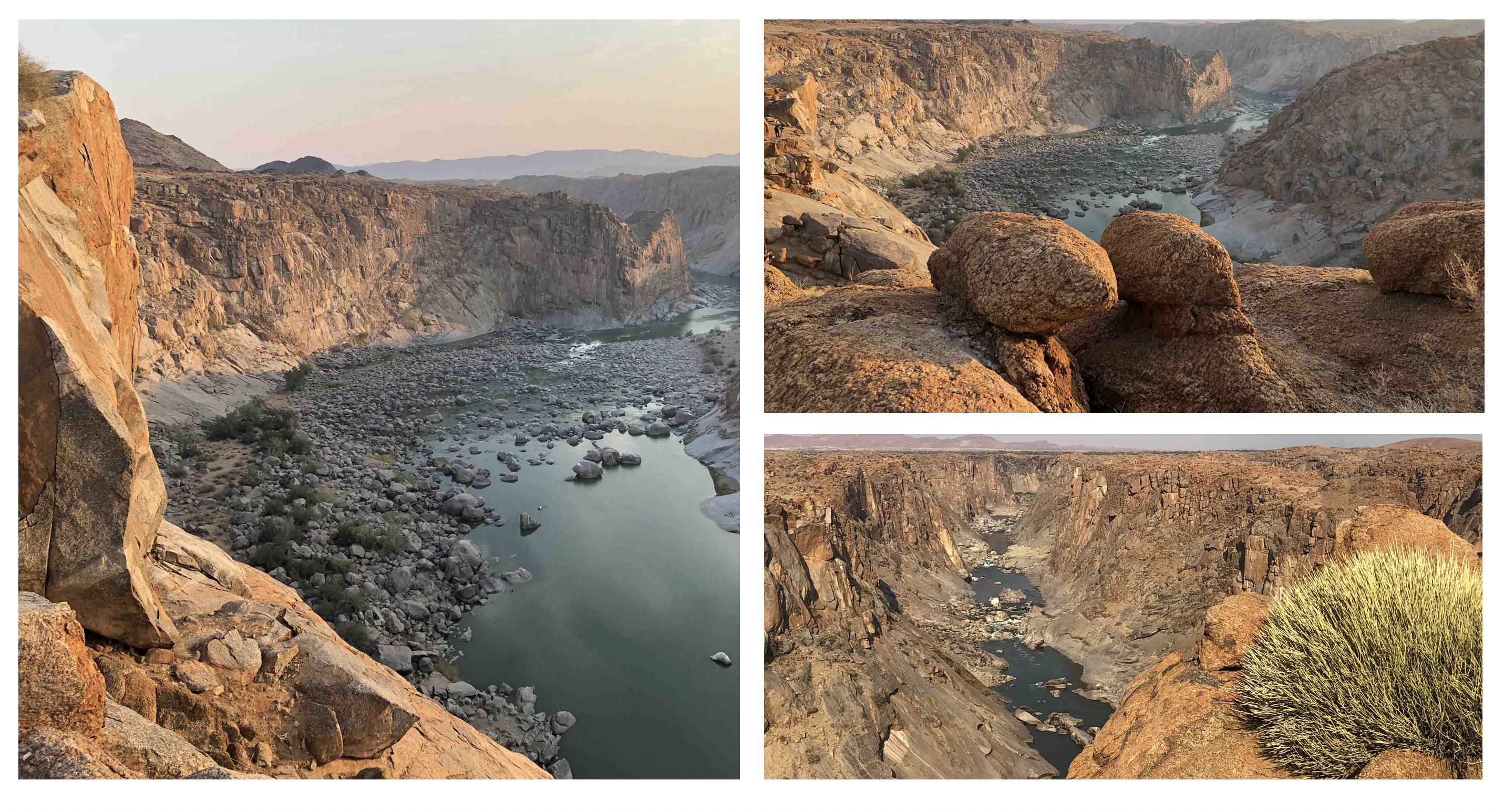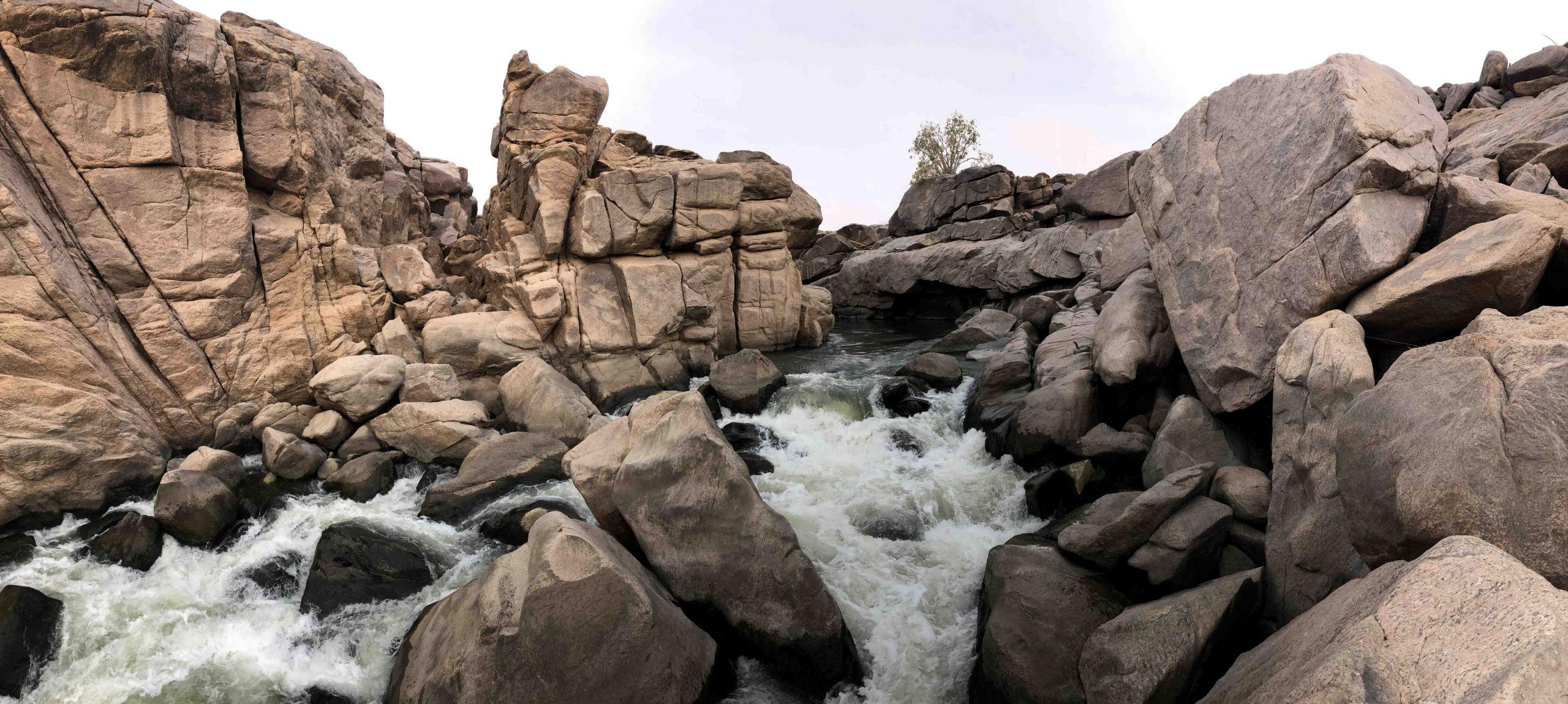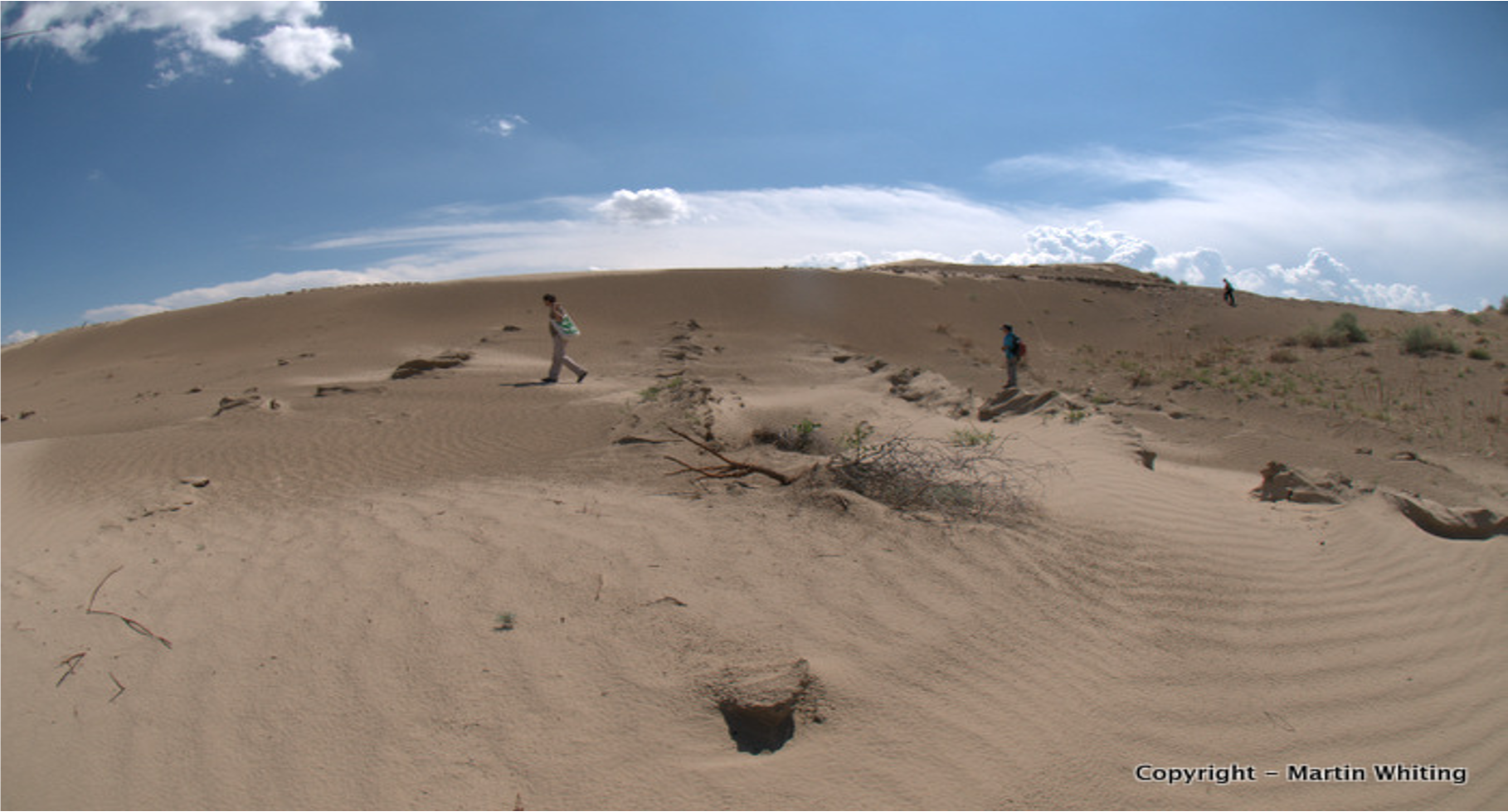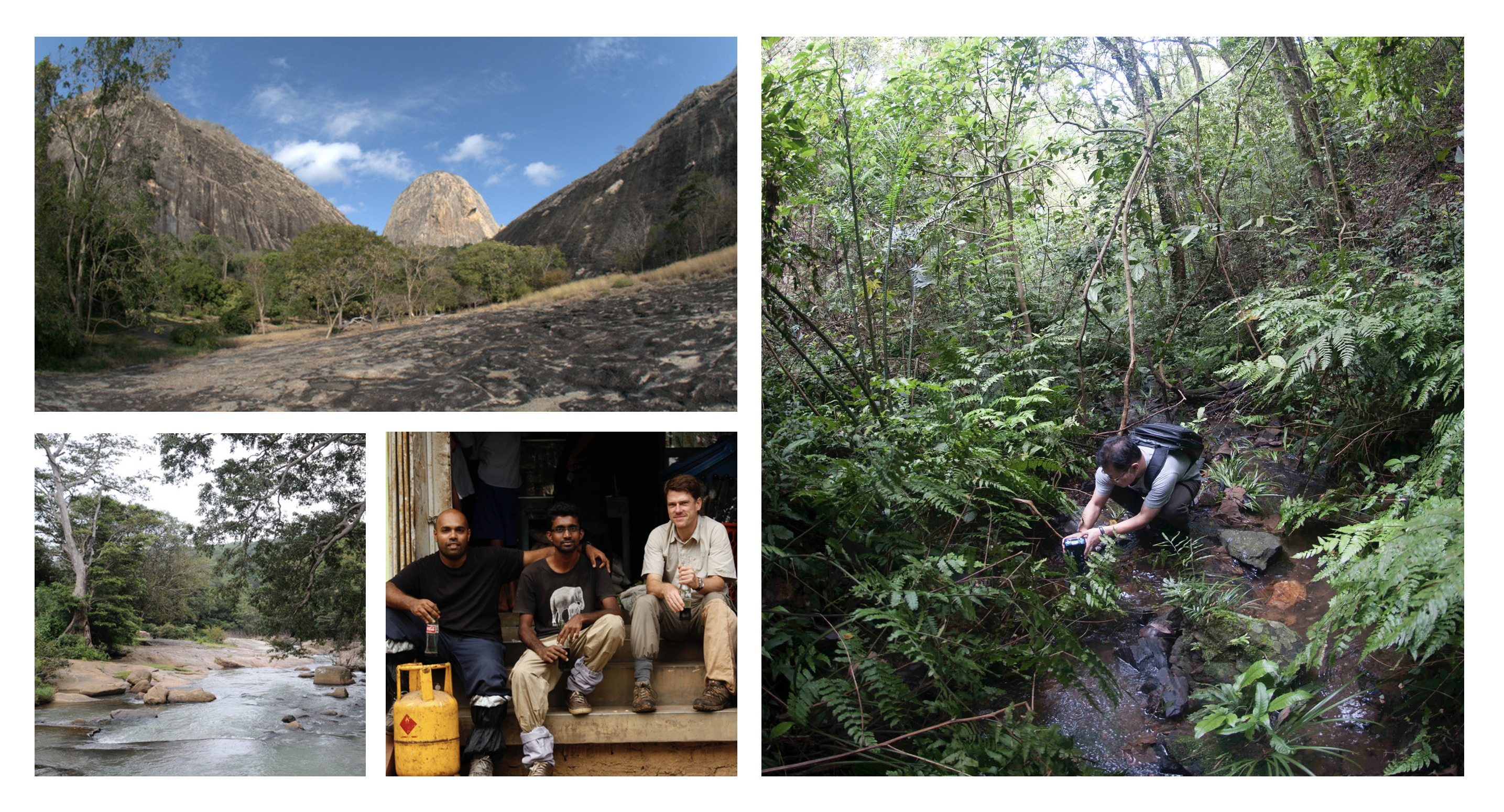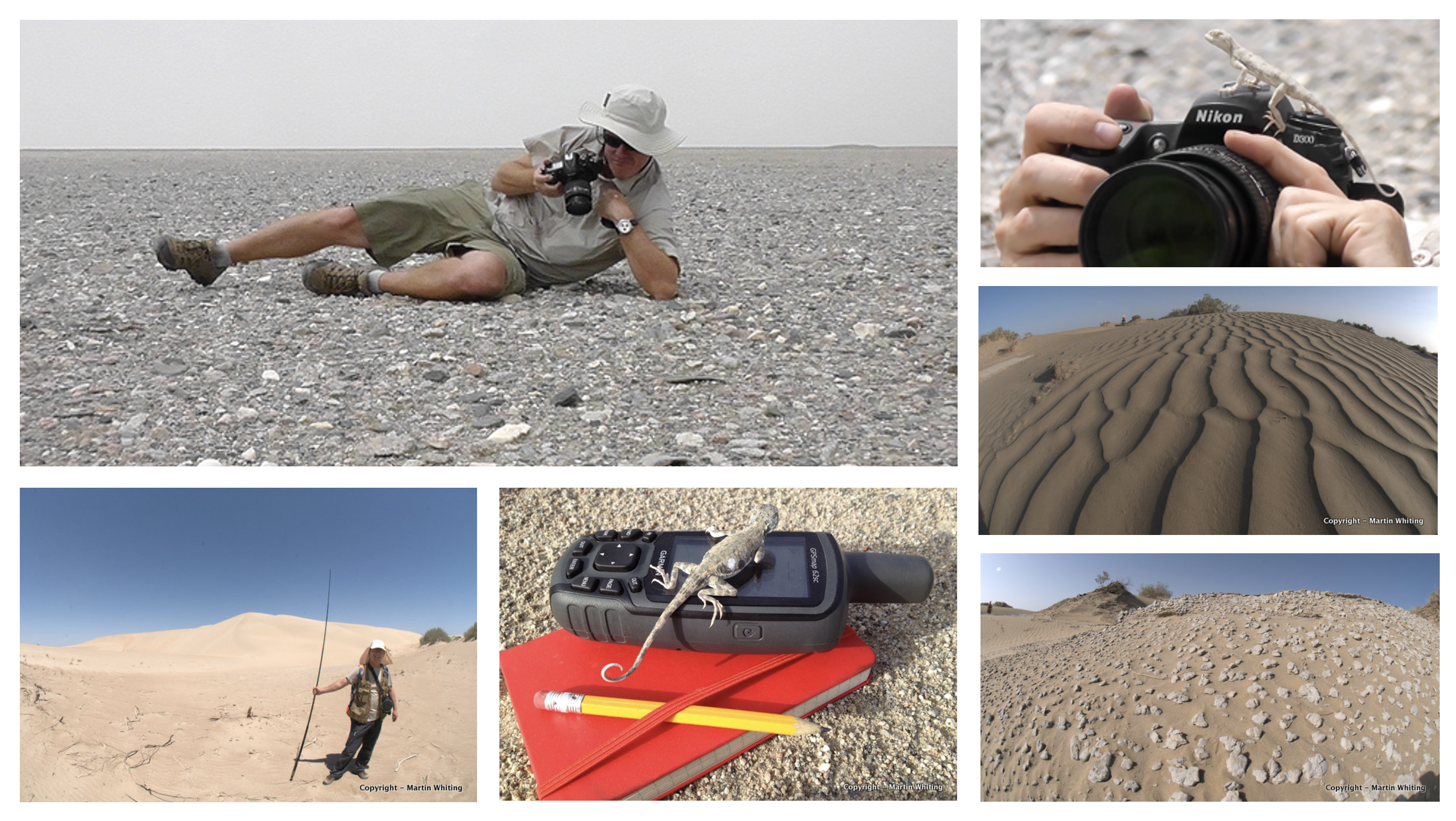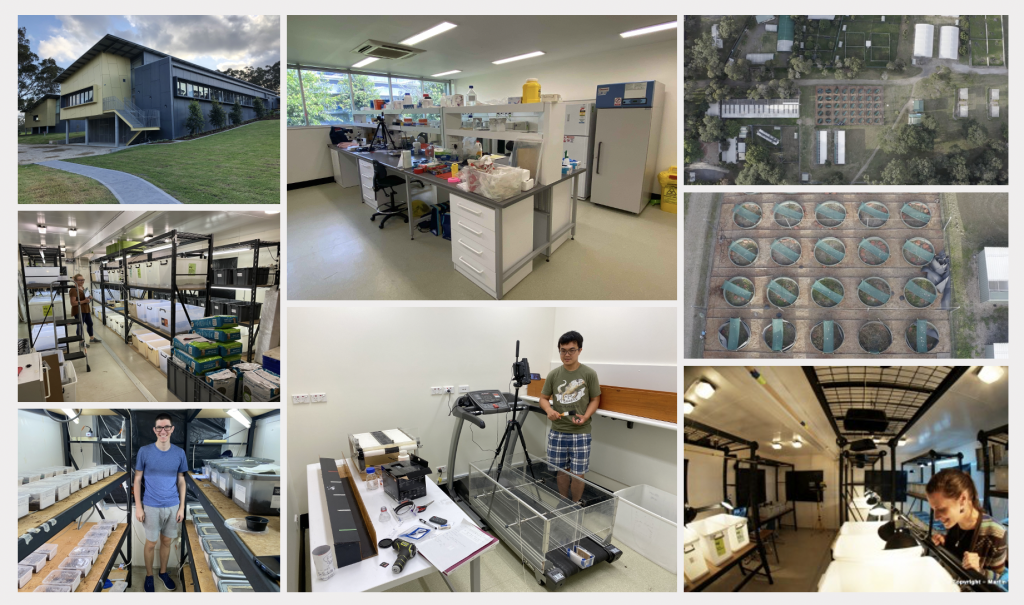The Lizard Lab

Behaviour, Ecology and Evolution of Lizards
We investigate the behaviour, ecology and evolution of lizards. In addition to lizards, we sometimes work on frogs, including cane toads, and have previously worked on snakes, mole-rats, Torresian crows, a turtle, and Malawi cichlids. We also have a new project on Australian magpies! Our research falls into three major themes: 1.) animal communication/sexual selection (visual and chemical signals); 2.) cognition (social learning, culture, behavioural flexibility); and 3.) social behaviour/sociality (evolution of kin-based family living, co-operation, complex sociality, social complexity, parental care, mechanisms of sociality).
In addition to field work, we work with captive animals in large semi-natural conditions where things are more controlled and where we can conduct behavioural experiments and observations. We also work with animals indoors, for more fine-scaled study, such as cognition.
We are part of the School of Natural Sciences at Macquarie University in Sydney, Australia. To learn more about what we do, here is a more detailed account of our research and also have a look at what we have published.
 The lab has traditionally been very diverse. In addition to Aussies, we have had students and postdocs from Colombia, Canada, Portugal, Spain, Argentina, Taiwan, China, France, Belgium, Germany, Austria, the UK, and Costa Rica. We have also had lots of interns from a wide range of countries. The lab is a very supportive and social environment. We have weekly lab meetings with the Shine Lab, with whom we socialise as a single group. Click on the People tab to see who is currently in the lab; there is also a Hall of Fame for past lab members. This photo was taken in our old lab ‘house’ which had lots of character – now we are in a shiny new building.
The lab has traditionally been very diverse. In addition to Aussies, we have had students and postdocs from Colombia, Canada, Portugal, Spain, Argentina, Taiwan, China, France, Belgium, Germany, Austria, the UK, and Costa Rica. We have also had lots of interns from a wide range of countries. The lab is a very supportive and social environment. We have weekly lab meetings with the Shine Lab, with whom we socialise as a single group. Click on the People tab to see who is currently in the lab; there is also a Hall of Fame for past lab members. This photo was taken in our old lab ‘house’ which had lots of character – now we are in a shiny new building.
We still managed to socialise during covid-lockdown. Steph Deering organised a trivia night. On another occasion we had a cross-continental catch-up with ex-lab members.
